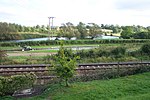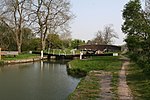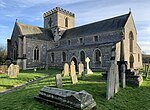Crofton Pumping Station
Canal museums in EnglandCornish enginesFormer pumping stationsGeorgian architecture in WiltshireGrade I listed buildings in Wiltshire ... and 9 more
Grade I listed industrial buildingsIndustrial archaeological sites in EnglandInfrastructure completed in 1812Kennet and Avon CanalMuseums in WiltshirePreserved beam enginesSteam museums in EnglandUse British English from February 2023Water supply pumping stations

Crofton Pumping Station, near the village of Great Bedwyn in Wiltshire, England, supplies the summit pound of the Kennet and Avon Canal with water. The steam-powered pumping station is preserved and operates on selected weekends. It contains an operational Boulton & Watt steam engine dating from 1812, making it the oldest working beam engine in the world in its original engine house and capable of doing the job for which it was installed.
Excerpt from the Wikipedia article Crofton Pumping Station (License: CC BY-SA 3.0, Authors, Images).Crofton Pumping Station
Crofton Road,
Geographical coordinates (GPS) Address Nearby Places Show on map
Geographical coordinates (GPS)
| Latitude | Longitude |
|---|---|
| N 51.35827 ° | E -1.62511 ° |
Address
Crofton Road
SN8 3LX , Great Bedwyn
England, United Kingdom
Open on Google Maps









